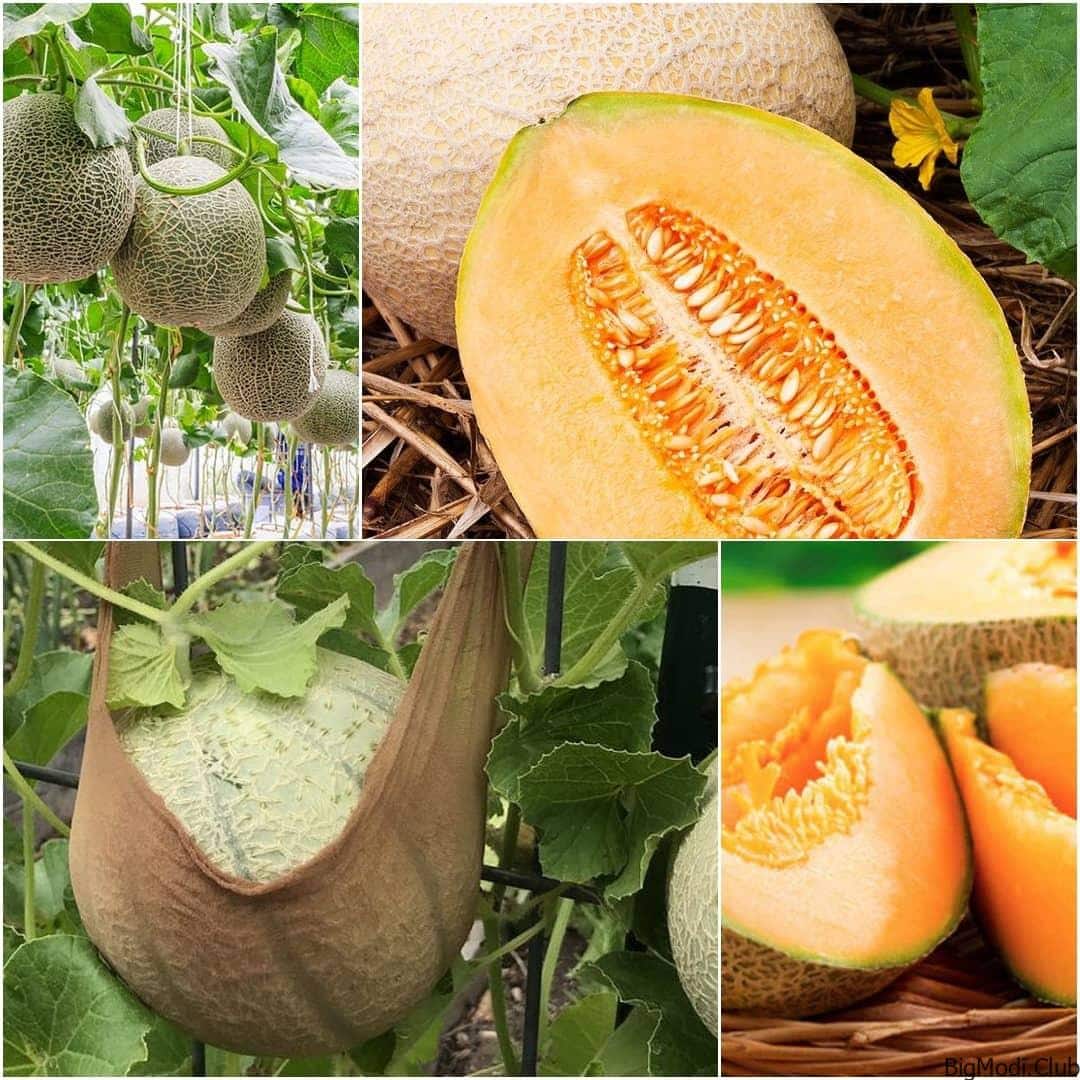Growing cantaloupe is a rewarding experience for both novice and seasoned gardeners. Whether you’re looking to plant from seed or transplant seedlings, it’s essential to know how to grow cantaloupe for a successful harvest. By choosing the right variety, preparing your soil, and following best practices for mulching, watering, and pest control, you can ensure your garden yields flavorful fruit. In this guide, we’ll explore everything you need to know about how to grow cantaloupe, from planting to harvesting and storage.
How to Grow Cantaloupe
Choosing the Right Location and Preparing the Soil
To grow healthy and productive cantaloupe, selecting the right location is crucial. These melons thrive in sunny spots with rich, well-drained soils. If you can, opt for sandy soil that’s been enriched with organic matter. Before planting, work in a complete fertilizer or organic compost to give the plants a strong start.
Selecting the Best Cantaloupe Varieties
Choosing the right variety can make a big difference in your harvest. Here are some top picks:
- Hale’s Best Jumbo: This popular variety produces large, sweet melons with firm, aromatic flesh. It’s a great choice for home gardeners seeking both flavor and size.
- Athena: Known for its disease resistance, Athena yields smooth, juicy melons with a sweet taste, making it a reliable option in many regions.
- Sarah’s Choice: If you prefer smaller melons, Sarah’s Choice offers medium-sized fruit packed with sweet, fragrant flesh and a deep orange color.
Additional Varieties to Consider: Other excellent options include Ambrosia, Mission, Summit Hybrid, Rocky Sweet, Classic Hybrid, and Hales Best.
How to Grow Cantaloupe From Seed: Step-by-Step
If you’re starting your cantaloupe from seed, wait until soil temperatures reach at least 65°F. Plant your seeds about 1-2 inches deep in mounds that are spaced 4 feet apart. Once the seeds sprout and develop two leaves, thin the plants to leave just 2 strong ones per mound. For a head start on the growing season, you can also transplant seedlings. Plant these 2 feet apart, ideally using black plastic mulch to warm the soil and speed up early growth. Don’t forget to use row covers or hot caps to protect the young plants from any late frosts.
Managing Mulch and Row Covers
Mulching plays a critical role in growing cantaloupe. Black plastic mulch not only warms the soil but also conserves water and keeps weeds at bay. When the soil temperature rises above 75°F, you can apply organic mulches like straw or grass clippings. Row covers are another helpful tool, especially for protecting seedlings in cooler weather. However, be sure to remove them once the plants start flowering to allow for proper pollination.
Effective Watering Techniques
Proper irrigation is essential for sweet and juicy melons. Water your cantaloupe deeply but infrequently, aiming for about 1-2 inches of water per week. Drip irrigation works best to ensure the water reaches the roots while keeping the foliage dry. As the melons near ripening, gradually reduce the water to enhance their flavor.
Fertilizing for Strong Growth
Once the vines begin to run, give them a nutritional boost by side-dressing each plant with 3-4 tablespoons of nitrogen-rich fertilizer (21-0-0). This helps promote vigorous vine growth and larger fruit.
Handling Pests and Diseases
While cantaloupe can attract some pests, such as aphids and cucumber beetles, there are ways to control these invaders. Aphids can be dislodged using insecticidal soap or strong jets of water, while cucumber beetles may require early application of pest control methods to avoid damage. Watch for common diseases like powdery mildew and wilt, and take action early by selecting resistant varieties and managing pests effectively.
Harvesting Your Cantaloupe
Knowing when to harvest is key to enjoying the perfect cantaloupe. The fruit is ready when it easily separates from the vine and the skin’s background color turns from green to creamy yellow. Typically, cantaloupe takes about 35-45 days to mature after flowering, depending on the temperature.
Storing Your Harvest
Once harvested, cantaloupe can be stored for 1-2 weeks if kept at a temperature of 45-50°F. Be sure to consume them while they are fresh for the best flavor and texture.
Maximizing Productivity
For a steady supply of cantaloupe, plant 3-4 plants per person for fresh consumption. If you enjoy juicing or freezing cantaloupe, you may want to grow an additional 3-4 plants.
Nutritional Benefits of Cantaloupe
Cantaloupe is an incredibly nutritious fruit. It is composed mostly of water, making it hydrating and low in calories. Just a quarter of a melon contains around 50 calories and is a rich source of both vitamin A and vitamin C, making it a healthy addition to any diet.
FAQs:
Are cantaloupes easy to grow?
Yes, cantaloupes are relatively easy to grow if provided with the right conditions. They thrive in warm, sunny environments with well-drained soil. With proper care, including regular watering, mulching, and pest management, cantaloupe plants can yield a bountiful harvest.
How long does it take to grow a cantaloupe?
Cantaloupes typically take 35-45 days to mature after flowering. From planting, the entire growing period can range from 80 to 90 days, depending on the variety and growing conditions.
Do cantaloupe plants need to climb?
No, cantaloupe plants do not need to climb. They are vining plants that grow along the ground. However, they can be trained to grow vertically on a trellis, which helps save space and can improve air circulation, reducing the risk of disease.
Do cantaloupe grow better in sun or shade?
Cantaloupes grow best in full sun. They require at least 6-8 hours of direct sunlight daily to produce sweet, flavorful fruit. Growing cantaloupe in the shade can result in slower growth and less flavorful melons.


